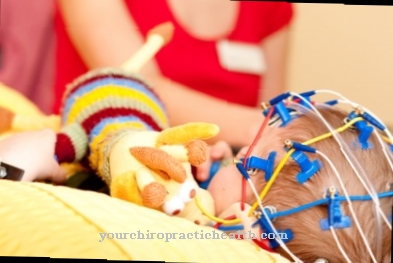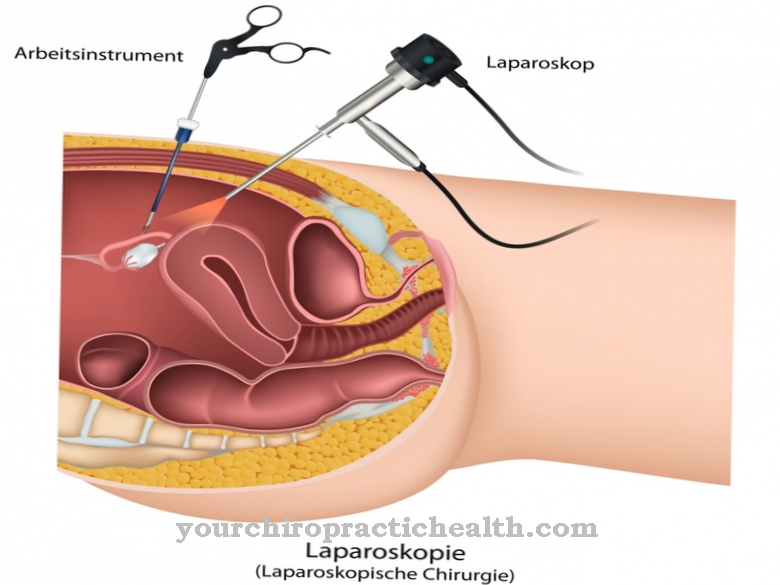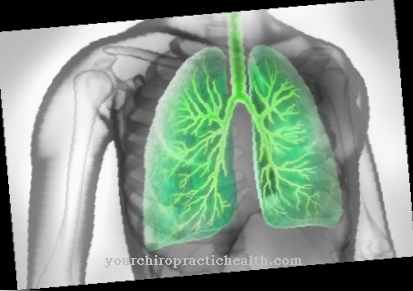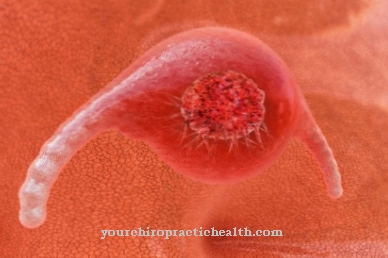The academic Pathophysiology is a medical sub-area within pathology. It deals with the teaching of pathological changes in body functions (pathology) as well as changes in the body (physiology) of a living being. The medical term goes back to the Greek language. Pathos means suffering and physique, body and nature.
What is the pathophysiology?

The pathophysiology, also pathological physiology, focuses on the pathological changes and the resulting functional disorders of the human organism. If a person falls ill, his body no longer functions to the full, deviating from its regular, healthy mechanism.
The pathogenesis determines how the diseased body functions and which functional mechanisms lead to the pathological changes. Medicine accepts that even under these pathologically altered conditions, the body has a physiologically meaningful normal function that maintains the physiological balance (homeostasis). The diagnosis is based on a seamless connection between a healthy and a sick state, since the body still enables normal life processes of the healthy, non-diseased body parts and organs despite the illness.
For this reason, doctors do not make a strict distinction between sick and healthy, since even a sick patient regularly has normal life processes and healthy bodily functions. The medical sub-areas include vegetative physiology, cardiovascular physiology, neuro- and sensory physiology, and cellular physiology.
Treatments & therapies
Physiology deals with the natural biochemical and biophysical functioning of the organism as well as with its natural life processes. Pathophysiology only comes into play when this intact biorhythm and the associated functions are out of balance due to diseases.
Pathology is the study of disease and its research. She deals with the abnormal states and processes of living beings and their causes. Pathophysiology is a combination of these two medical areas, which deals with the natural relationships between the body and its diseases. The course of a disease process is called the etiology. In medical circles, physiology is regarded as the “summit of natural science”, presumably because it deals with the so-called “crown of creation”, the human being. Pathophysiology is used in all medical areas, as pathological changes can occur in the whole body.
The treating physicians deal with the central questions of the human body and its pathological dysfunctions. Only when the pathologist has a comprehensive understanding of the pathophysiological relationships of the patient's illness can he initiate appropriate diagnoses, therapies and rehabilitation measures. Pathophysiology is the key to understanding clinical disease origination and development. Human physicians deal with the individual clinical symptoms and in this way also identify difficult relationships. The fundamentals of pathophysiology include the areas of health, illness, aging, death, peculiarities of brain death, chronic reactions to dehydration and the basic mechanisms of organ, organ system and cell disorders.
In this area, disorders in the electrolyte and acid-base balance, vegetative and psychosomatic disorders are treated. In the field of clinical pathophysiology, all disorders are treated that have to do with diseases and functional disorders of the kidneys, water balance, breathing, digestion, metabolism as well as heart and brain disorders.
The doctors treat complaints and diseases such as kidney failure, systemic diseases, respiratory insufficiency, pulmonary embolism, pneumothorax, pulmonary emphysema, gastric mobility disorders, functional disorders of the oral cavity, mobility disorders and diseases of the intestine, liver disorders, acute metabolic derangements, disorders of the nervous system and sensorimotor function, metabolic dysfunction. Diabetes, strokes and all disorders and diseases associated with malignant brain activity.
You can find your medication here
➔ Medicines for painInvestigation methods
Pathophysiology enables medical practitioners to optimally understand the complex relationships between the human body and its clinical origins and development. In summary, a deep understanding of pathophysiology is the best route into everyday clinical practice and the treatment of all types of diseases.
The pathogenesis of the treated clinical pictures is of great importance for doctors with regard to diagnosis, therapy and follow-up treatment. The main goal of pathophysiology is to promote the patient's compensatory skills. Pathological physiology has two types of pathogenesis as an instrument for recognizing and classifying diseases and pathological changes in the human organism. The formal pathogenesis, which deals with the “how” and asks about the functional and structural course of the disease, and the causal pathogenesis, which asks about the “why” and investigates the cause of the disease at hand.
It deals with the connection between noxae (cause of illness) and the patient's disposition to actually become ill. If a patient falls ill with the flu, the virus is the cause (etiology). The overall situation in which the patient finds himself before the illness through contact with the virus is the cause and disposition that made the flu illness possible in the first place (causal pathogenesis). The inflammatory processes, runny nose, fever and all other side effects of the flu represent the course of the disease itself (functional pathogenesis). Pathologists understand the functioning and structure of all organs, the development of functional disorders and clinical pictures in all areas of the human body.
In addition to biological factors, doctors are increasingly focusing on psycho-social factors that play an important role in the development of clinical pictures. The problem of pathophysiology is that diseases regularly run over time, while scientific and medical considerations only provide snapshots and, on this basis, recognize the relationships between the disease process and the resulting dysfunctions in the human body. In a figurative sense, the pathologists capture many instantaneous images and put them together like a movie to form an overall picture in order to reconstruct the course of the disease.

























.jpg)

.jpg)
